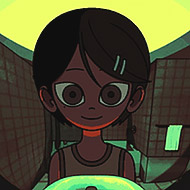Am I Nima is a game that challenges your ability to interpret visual patterns, track subtle changes, and make difficult choices without clear feedback. Set in a world where identity and perception constantly shift, this game pulls you into a loop of self-reflection and strategic reasoning. The levels are unpredictable, the narrative deliberately confusing, and your decisions often come back to alter future events. Each new environment encourages the player to ask the same question: are you still playing as the same person, or has something changed?
Exploring Through Identity Loops
At its core, Am I Nima revolves around visual puzzles and nonlinear exploration. Each level resets in subtle ways, retaining echoes of what came before. Players walk through shifting environments that distort memory and expectations. The layout of rooms, the presence of NPCs, and even the soundtrack evolve depending on previous actions. Some stages may appear normal at first but gradually develop glitches or inconsistencies, pushing players to backtrack or re-evaluate their decisions.
Instead of presenting clear objectives, Am I Nima allows players to determine their own interpretation of progress. This design rewards replaying chapters to explore alternate outcomes. The ambiguity is purposeful, giving the game depth while promoting experimentation over simple success.
Mechanics Built on Observation and Choice
The gameplay challenges traditional notions of winning. To advance, you’ll need to:
- Notice environmental shifts between levels, such as reversed layouts or misplaced items.
- Interact with optional prompts that may alter future stages.
- Piece together scattered visual clues to determine your current identity or timeline.
- Return to earlier points in a nonlinear fashion to trigger alternate branches.
Some players might find themselves in loops where the same scene replays with minor alterations, requiring careful comparison to detect changes. Am I Nima often blurs the line between illusion and reality, leaving players unsure whether they’re progressing or regressing.
Replay Value and Layered Endings
Am I Nima thrives on uncertainty. There are multiple endings, most of which are not labeled or even acknowledged within the game. Some endings depend on how many objects you ignored, while others depend on patterns of behavior such as how often you chose silence over interaction. The game tracks even small details, such as whether you took left or right turns more frequently.
Key features that extend the game’s replayability include:
- Randomized layouts on subsequent playthroughs that reflect past decisions.
- Hidden symbols that reveal lore or trigger visual distortions when discovered.
- Branching outcomes based on identity-based logic, such as whether you choose to play “as Nima” or someone else.
With a heavy focus on psychological complexity and nonlinear design, Am I Nima invites players to confront not just the puzzles, but also their own assumptions about who they are within the game’s framework. It’s not about reaching a finish line—it’s about discovering what the game is really asking.



















